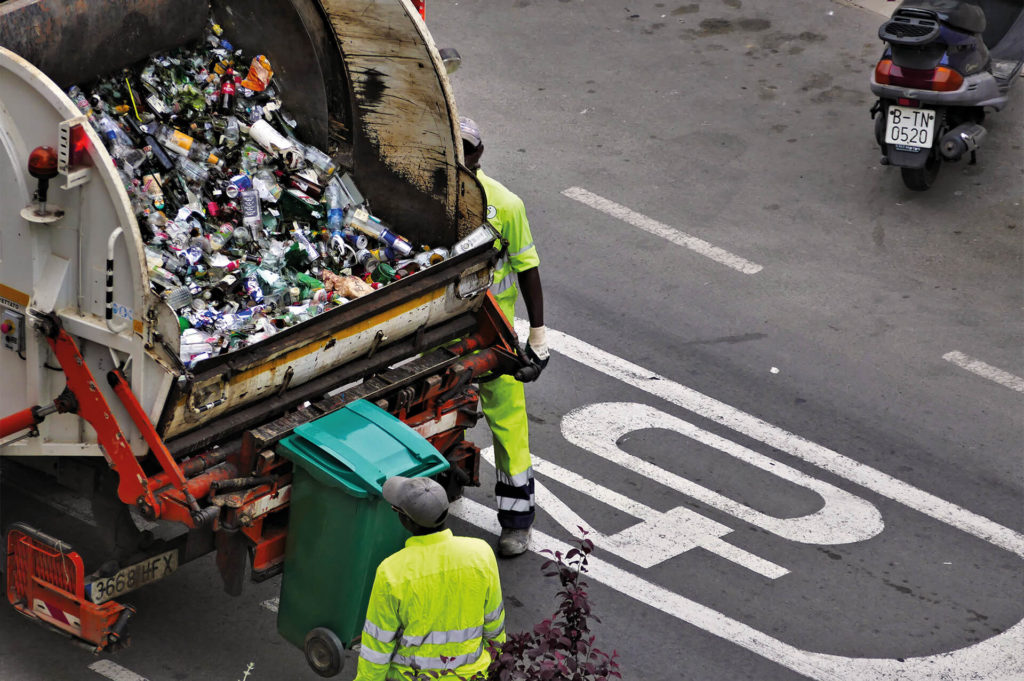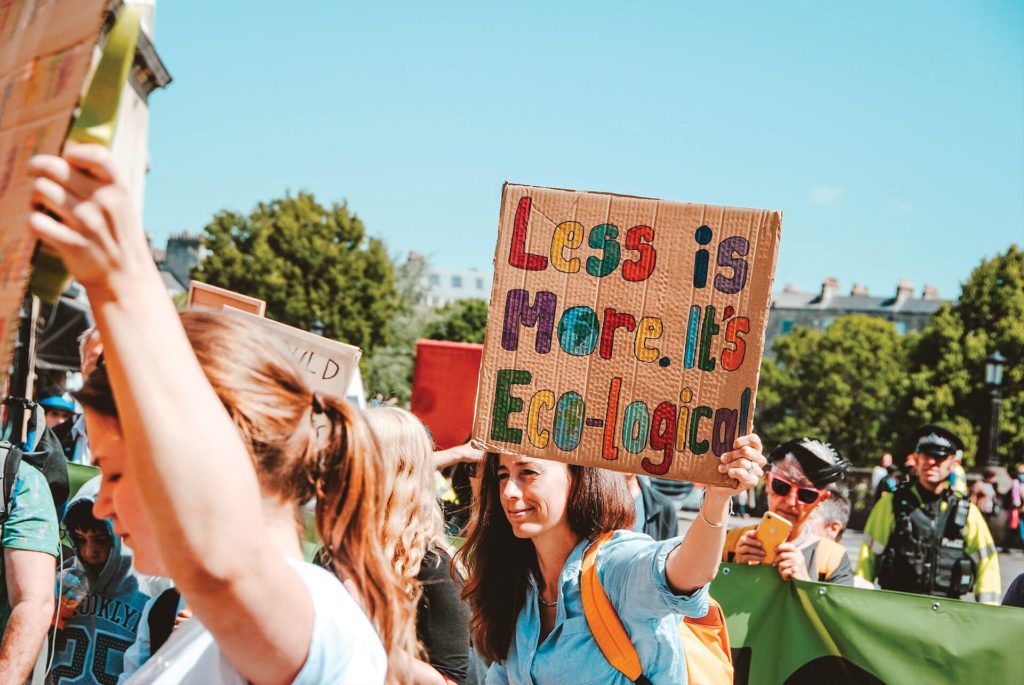Technology, Economy, Society: What Do We Need to Achieve Circularity?
Transitioning to a more circular economy increasingly seems a necessity, but what do we need to achieve this transformation? REVOLVE Circular explores the barriers to the circular economy in its latest interview with the Norwegian recycling company TOMRA.
‘Why technology is not enough to achieve a circular economy’ is the title of a recent announcement by TOMRA, a company describing itself as a “global leader in sensor-based technologies with approximately 50 years’ experience in diverse sectors such as the Food, Recycling and Mining industries”. REVOLVE Circular caught up with Mithu Mohren, Senior Vice-President Communications, Circular Economy, at TOMRA, to find out more.
Why is technology not enough to achieve a circular economy? What is it that technology cannot do in the shift from a linear to a circular economy?
Allow me to explain some technological solutions first, after which I will address what technology cannot do:
Through its sensor-based technology, TOMRA enables recovery of valuable resources that might otherwise be lost, allowing more material to be available for recycling and keeping these in the loop as long as possible. Whether it’s reverse vending machines to take back used beverage containers or sorting machines that separate different types of material – such as High-Density Polyethylene (HDPE) from household waste – the goal is to collect as much material as possible. Of course, these materials must be designed for recycling.
When it comes to waste management’s role in positively impacting climate change, there are two aspects that should be considered: first, increasing the amount of material collected for recycling and second, increasing the amount of material that is recycled in a closed loop. Our recently launched Holistic Resource System focuses on the first aspect with existing waste management structures such as: deposit return schemes; separate collection of selected waste streams; and mixed waste sorting. If these three are combined in an optimized way globally, we could reduce CO2 emissions by 2.76 billion tons each year. As the technology to support this system already exists, this can be done – now.
Finally, new and developing recycling technologies ensure that recyclable material can be processed to highquality recyclates leading to a more sustainable future.
So what can technology not do? First of all, it’s important to emphasize that we believe very strongly in the waste hierarchy, in which ‘reduce’ and ‘reuse’ play primary roles. That means reducing our waste and reusing the resources that are already in circulation. However these initiatives will take time to get to scale to be effective. We must act now – and that is where recycling comes in.
Although TOMRA has 50 years of experience in circular waste management, we know we cannot accelerate the transformation to a circular economy alone. All of us in the value chain must work together to develop sustainable solutions to manage our waste. Until recently, that wasn’t happening, but now that’s changed. In fact, TOMRA is considered to be a go-to collaborator and strategic partner for business, authorities and NGOs when it comes to developing these solutions. Working together – talking to one another – does not require technology.
As part of the value chain, consumers can and should use their power of purchase to convince brand owners that they are shifting their buying habits towards a sustainable future. Of course, demand from brand owners can only be met by adequate supply, and at attractive prices.
Policy plays a key role in supporting the establishment of such a marketplace. Legislation has already begun to set higher standards towards a Green Recovery: the Single Use Plastic Directive ; increased recycled content amounts in packaging; higher recycling quotas; the establishment of a common measuring system in the EU (where countries can currently decide on their own how to measure what they report); carbon taxes; plastic taxes; and the EU’s taxonomy are just some of the initiatives that are either already in place or being prepared to go into law shortly.
Encouraging demand of high-quality recyclates through such policies means that supply must be also adequate.

Let’s talk about recycling, your core business: its critiques say that recycling only addresses the “end of life” stage of products and is a linear economic activity which does not close any loops – what is TOMRA’s answer to such criticism?
While this might be the case until now, we see that the tide is changing. There has been a clear and strong shift in the mindset across the value chain so that, although better than nothing, downcycling cannot be the goal of recycling. As mentioned before, you see this shift in policy changes, new technology developments and a true and concerted effort to make REAL advancements in recycling. We believe in the waste hierarchy – that’s a fact. However, we are not specialists in reduce. In fact, TOMRA’s history lies in reuse (through the Reverse Vending machines) and strong and impactful support of recycling. More recently, we’ve been working with brand owners and convertors to improve the recyclability of their packaging, so-called Design for Recycling. This includes moving towards mono-material packaging, supporting development of new digital tracing and marking technology and continuing to advance our own artificial intelligence efforts, to name a few. In the end, the better the material can be sorted with high-purity yields, the higher the opportunity for high-quality recycling and truly closing the loop. That’s the goal!
TOMRA has recently created ‘ReSociety’. Can you tell us what this initiative is and what you are trying to achieve with it?
ReSociety is an initiative that was launched in 2020, with the goal of becoming a circular economy hub for information and collaboration. Currently, the initiative is a platform to provide information about all things circular.
On the business-to-consumer side, while consumers are becoming increasingly interested in the environment and circular economy, they are unaware of what their role in it is. ReSociety aims to provide education that all of us can use as we make everyday decisions like – do I really need another pair of jeans? What should I consider when thinking about purchasing a vehicle? How do I consume sustainably?
On the businesses-to-business side, the platform is used to talk about systemic change and what the value chain can do to move towards a circular economy quickly. To date, there have been posts on chemical recycling, deposit return schemes and the Holistic Resource System. The motivation is one of collaboration, encouraging all of us to work together to come to sustainable solutions.
The platform will be relaunched in September 2021 and will allow for much more interaction. Our hope is that a true ReSociety – a movement – will come together here to communicate, initiate projects, and get informed in order to make impact.

How will you avoid ReSociety becoming a vehicle for greenwashing (or circularity-washing) TOMRA’s activities as a for-profit company?
This is a very good question and one that we are fully cognizant of. Before, I explained what ReSociety is and hopes to become. What ReSociety is NOT is a platform to sell our technology. While TOMRA initiated the platform, we welcome guest posts that have nothing to do with our business. We are aiming for true collaboration towards a circular economy – whether it has to do with recycling or not.
Let’s talk about one of the key issues of the linear economy, the limited responsibility of producers for the enormous waste their products generate. As a technology and recycling firm, what does TOMRA think about extending the responsibility of producers beyond the point of sale – so-called Extended Producer Responsibility (EPR) schemes – and what is your role in it?
We strongly believe that EPR is a necessary tool to accelerate the transformation to a circular economy. Recycling must become an attractive business model, which is currently not the case. EPR is part of making that model appealing.
As mentioned before, one of the keys to ensuring sustainability is to collect as much recyclable material as possible. This collection must be financed, or at least co-financed, for which EPR should be used. While there are different types of EPR, one interesting format is Eco-modulation, the concept of penalizing the use of materials that are less environmentally friendly. If implemented properly, this would also work to incentivize more recycled content in packaging material, while penalizing those who choose to continue using proportionately more virgin material.
Deposit return schemes (DRS) can also be a very good example of a successful EPR scheme. These work by adding a small extra deposit on the price of drinks sold in plastic and glass bottles and cans, which the consumer gets back once they’ve returned the container for recycling. TOMRA supports policy that works towards establishing such effective EPR schemes.
What solutions – or good examples – that are not technologydriven are out there in which consumers, policy-makers, and collaborators across the value chain are already making a difference?
Again here, collaboration is key. The focus on a Green Recovery – on both sides of the Atlantic – is strong evidence that the severity of the situation is being addressed. We also see no-packaging grocery outlets, more opportunities to reuse and non-traditional industries – such as fast-fashion – demonstrating their commitment to making adjustments to their business models towards greater sustainability.
Green start-ups are booming, and we feature some of them on ReSociety. It is no longer only ‘cool’ to be environmentally aware, it is a necessity, and the recent environmental catastrophes have cast well-deserved attention on the issue. We truly believe that together, we can make a difference.
Download the article as PDF